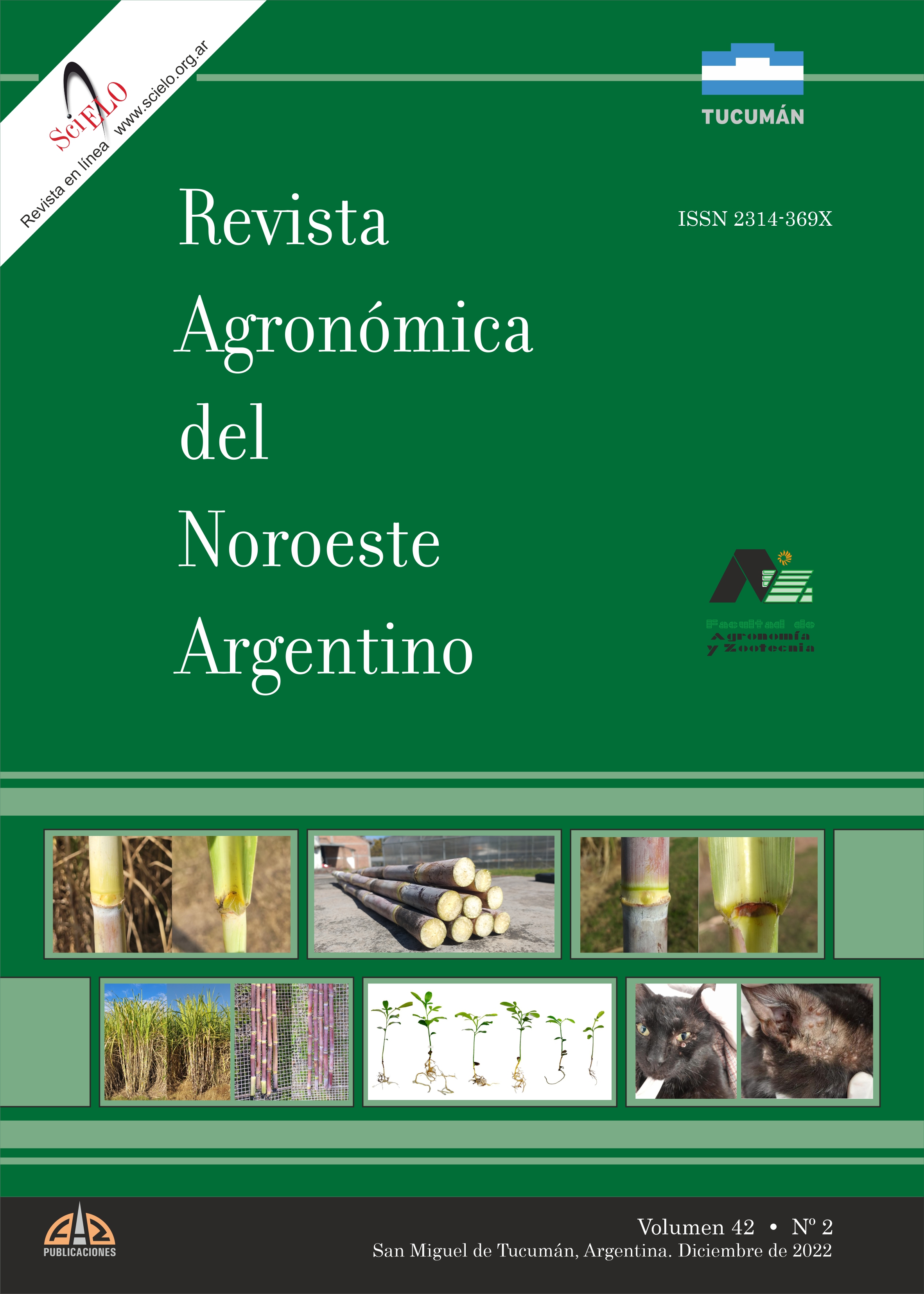Histoplasmosis in Two Cats in Gran San Miguel de Tucumán, Argentina
Keywords:
Felines, Histoplasmosis, MycosisAbstract
Both companion animals and people residing in or traveling to regions where histoplasmosis is endemic are at risk of exposure to Histoplasma capsulatum. Domestic cats (Felis catus) are highly susceptible hosts and are prone to developing clinical histoplasmosis. The presumptive diagnosis may not be obvious because these animals present a wide variety of nonspecific clinical signs. The objectives of this work were to describe two clinical cases of histoplasmosis and to evaluate whether the city presents the climatic and geographical conditions necessary for the survival of the H. capsulatum in the environment. The cats developed a systemic disease with dermatological signs, gastroenteric signs and respiratory complications that led to death. The disseminated form was the presentation manifestation of the disease. The geographic location and the climatic characteristics of Gran San Miguel de Tucumán, Argentina agree with areas of preference for this microorganism, therefore the disease should be considered endemic in this city. Veterinary doctors could incorporate it into the differential, in presentations with lymphadenomegaly, lameness and dermatological sinology with nodular and/or papular lesions, associated with systemic disease.
Downloads
Published
Issue
Section
License
Copyright (c) 2022 Revista Agronómica del Noroeste Argentino

This work is licensed under a Creative Commons Attribution-NonCommercial-ShareAlike 4.0 International License.









